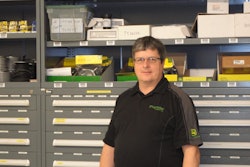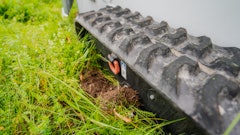The parts department is typically the most profitable department in a dealership, at least on a percentage-of-sales basis. It’s also the most unpredictable.
First and foremost, dealers are trying to keep track of all sorts of unique parts. Secondly, customer flow is very difficult to predict. During peak season, eight customers might already be waiting outside of your door when you arrive to open up in the morning. Then you don’t have another customer until 9:30 a.m., but by 10 a.m. you have a dozen waiting in line at your parts counter. It’s just very unpredictable.
That’s why I tell dealers that time is your enemy in the parts department. If you want to do a good job at moving and selling parts, time is the one thing you have to get your arms around.
Understand Your Average Transaction Time
Parts department transaction time is an often neglected yet critical element that dealers must measure and manage. What is transaction time? It’s from the moment a customer approaches your parts counter to the time that customer leaves the parts counter.
You obviously want to get a given customer in and out of your parts department as quickly as possible, since doing so allows you to take care of more customers in a shorter amount of time. We tell dealers that a transaction time of 4 minutes per customer is a good goal to have.
In order to reduce your transaction time, the first thing you want to do is clean up the parts counter and surrounding area. Take your arm and swipe everything off of that counter: catalogs, empty boxes, soda cans, shop towels, etc. That’s just clutter, and doesn’t look very professional. Remember, the “lakeside property” of your parts department is your front counter, so you want to keep it clean and organized.
I don’t think it’s a good idea to have stools at your front counter. Sure, allowing the customer to sit down seems like a great thing to do, but stools can get in the way of productivity. If you’re a busy dealer, do you really want a customer to sit down and have a cup of coffee and talk to you for 20 minutes? It’s not that you don’t want to take good care of customers, it’s just that you don’t want your transaction time to go up in the process.
Getting rid of stools can be a challenge at first. Parts staff might think that all you care about is ramming customers through the dealership. Actually, that’s exactly what you want to do—and that’s not an impersonal approach that hinders customer satisfaction. Think about that 4-minute transaction time. If you have eight customers and two parts counter people, the last two customers in line are going to wait for 12 minutes before they are helped. If you had a 7-minute transaction time, those last two customers will have to wait in line for 21 minutes. That’s right, “ramming customers through” actually helps you provide better customer service.
Staying on the topic of stools, I don’t think it’s a good idea to have them behind the front counter, either. Parts employees who are sitting down are not going to be as efficient as if they were standing up and moving. So my advice is to get rid of your stools.
Get Parts Moving
To sell more parts you need to know which parts are selling. Every dealer should be running a report from his business management system that shows parts sales by volume, or your fastest-moving parts. I advise dealers to run this type of report at least every 60 days.
A good approach is to come up with a top-50 list. Then, arrange your parts department so that your 50 fastest-moving parts are as close to your front parts counter as you can get them. For example, you don’t want your fast-moving belts hanging on the wall way in the back of your storage area; you want them on the wall next to or behind your front counter. Same goes for oil filters; get a good supply of your four or five fast-movers under the front counter.
This sounds simple, but is hard for some parts managers to do. They have their dozens and dozens of parts SKUs stored in a seemingly orderly fashion; all of the spark plugs in this section and all of the filters over in that section. It looks pretty, but kills a parts department’s transaction time. Get those fast-movers as close to the front counter as possible.
We’re a big fan of storage cabinets. They are great because they can hold a good volume of parts, and often fit nicely right behind the front counter. Sometimes dealers say, “Yeah, these sound great, but boy are they expensive.” Well, they are going to cost a little bit, but wouldn’t you rather buy six of these cabinets than hire another parts person? The cabinets never get sick, don’t require you to pay them overtime, and last forever.
Cabinets also make it a lot easier to do inventory. Everything is more compact and easier to go through. This is big when it comes to making your parts department more profitable. You have to be doing inventory checks efficiently and accurately if you want to improve inventory turns.
Bar Coding
Every major retailer has a bar code scanner at its point of sale. More dealers are also getting on board with this as they see the potential to reduce transaction times and increase inventory turns. And actually, the equipment is not that expensive.
Most of the major business management system providers offer software that has the capacity to utilize a bar code reading system. Furthermore, most parts are now shipped to dealers with bar codes on them.
Getting converted over to a bar code reading system is going to save the dealer a lot of time in the long run because he won’t have to type in the parts numbers any longer. Plus, inventory counts are going to be more accurate because the possibility of making a typo is eliminated.
Converting over to a bar coding system will take a little time, so it’s not something you want to tackle during the busy season. However, it makes for a great off-season project for your parts manager or other dealership personnel you’d like to keep employed.
Bob Clements is the president of Bob Clements International, a consulting firm that specializes in the development of high-performance dealerships. His organization works hands on with dealerships throughout North America, helping them attain the personal freedom and financial wealth all entrepreneurs strive to achieve. For more information, contact Bob Clements at (800) 480-0737 or [email protected].



















